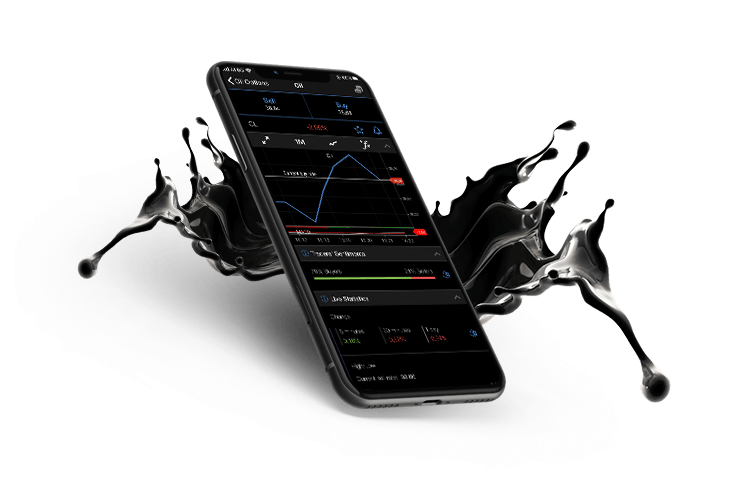How Oil Trading Works
Oil is found in underground reserves around the world. Each region’s Oil is slightly different to another. To accommodate for these variations, there are multiple global marketplaces or ‘benchmarks’ that set the price for each crude (unrefined) Oil.
Key Oil Benchmarks
There are many benchmarks that are used as reference prices for crude oil. The main ones are Brent, WTI, and Dubai/ Oman.
- Brent (EB)- Brent or Brent Crude covers roughly 66% of all Oil contracts. This oil is low in sulphur, classifying it as “light” or “sweet”, making it ideal for the production of Gasoline and Diesel. In addition, much of this is extracted from the North Sea from rigs that are already in the water, making it easy to ship.
- Crude Oil (CL) - Also referred to as WTI, is very “sweet”, making it ideal for gasoline refining, and is extracted within the United States. It is mostly extracted from land wells, so it is more expensive to export.
- Dubai / Oman - The main purchase point for Asia, this oil is “sour” meaning it is high in sulfur and a lower grade of crude Oil than what is found elsewhere. It is still highly sought after and a key benchmark.

Illustrative prices.
How to Trade Oil CFDs
Oil CFDs offer traders an opportunity to not only trade on specific benchmarks, such as Brent & WTI, but also presents opportunities to trade on Oil’s most in-demand products, which themselves are globally-consumed commodities.
Some of them are:
- Gasoline (RB)- Used to power cars and other combustion engines.
- Low-sulfur Gasoil (G)- Diesel that is delivered to ports in the ARA. These ports include Amsterdam, Rotterdam, and Antwerp, including Flushing & Ghent.
- Heating Oil (HO)- Priced in cents per gallon at the New York Harbor, Heating Oil is refined from crude oil and used to heat homes.
Top Oil CFD Trading Features
Going long or short is one of the more familiar features to CFD traders who want to take advantage of market volatility, without needing to purchase the underlying Oil asset. What’s more, positions can be opened or closed 23 hours a day, excluding weekends, without needing to worry about the maintenance or management of a live contract.
While futures typically expire at the end of the month, Plus500 offers its traders an automatic rollover service so they can keep contracts open without worrying about expiration dates. With rollover, contracts remain open and the value is transferred to new contracts of the same value at the time of rolling over. The Economic Calendar is a powerful tool to stay informed of upcoming OPEC meetings, US petroleum reports, and other planned events that may influence this commodity.
Going long or short on a position comes with the potential for profit as well as loss. In order to mitigate risk, traders should consider taking advantage of ‘Close at profit’, ‘Close at loss’, and other key features.
The Largest Oil Producers
Oil is produced in regions around the globe, offering traders the opportunity to trade on not only the commodity but its producers as well.
Some of the largest producers as of October 2020 are:
- Exxon Mobil Corp. (XOM)- Founded in 1870 as Standard Oil, this gas & oil producer is valued at approximately $140 billion.
- Royal Dutch Shell (RDSA-L)- A British- Dutch Oil company that is valued at approximately $51 billion.
- China Petroleum & Chemicals (SNP)- Based in China and traded on the New York Stock Exchange, this producer’s market capitalization is valued at approximately $10 billion.
- BP (BP-L)- A British Oil & Gas company valued at approximately $54 billion.
- Total SE (FP.PA)- Headquartered and traded in Paris, France, this leading Oil European OIl company is valued at approximately $87 billion.
Many of these companies* have other revenue streams which include various petroleum products and Natural Gas.
While Oil and its products have been increasingly in demand over the past few decades, the day to day trading of these instruments are subject to volatility. In addition, the price of these commodities do not always reflect the level of consumption or inflation. This means that despite an increase in consumer consumption, it is possible that the price per barrel or gallon will decrease. At the same time, a decrease in consumption may be paired with an increase in price. This is a result of Oil price’s many influences beyond consumer demand.
*Instrument availability varies by operator.
